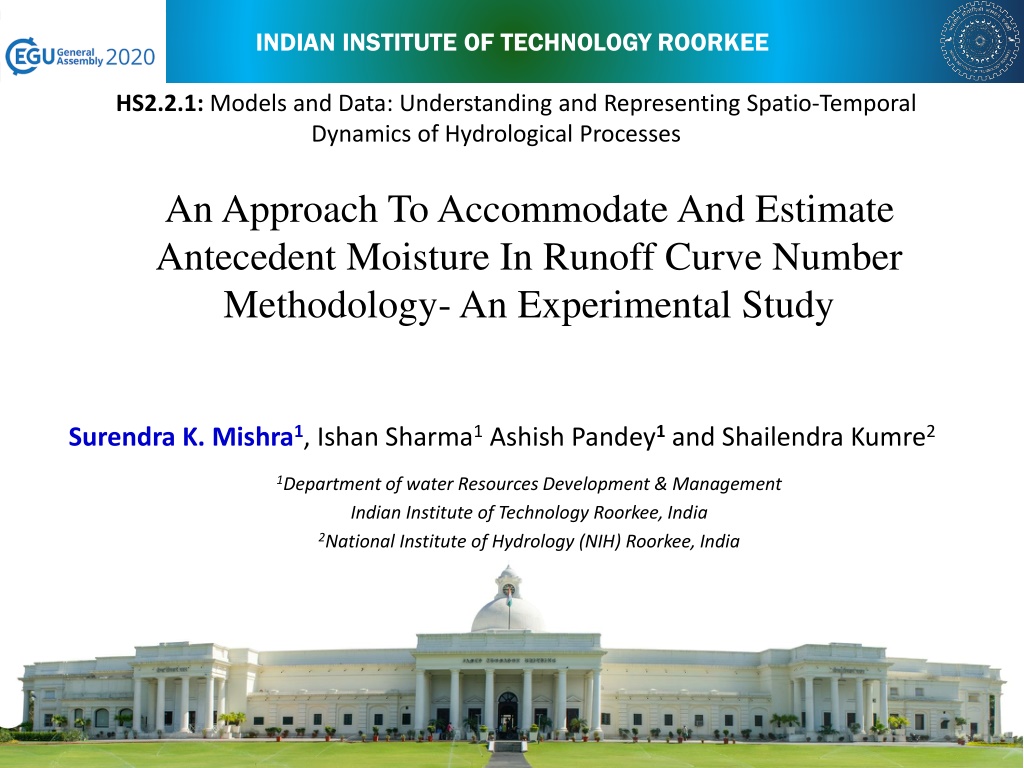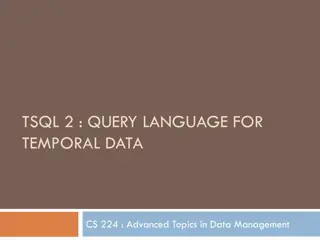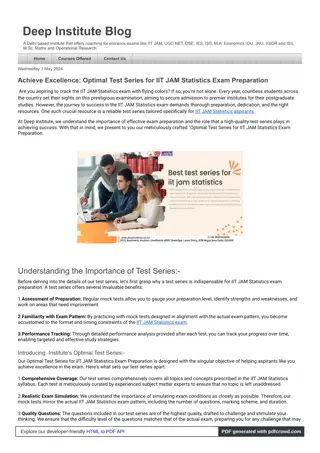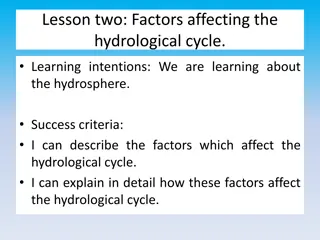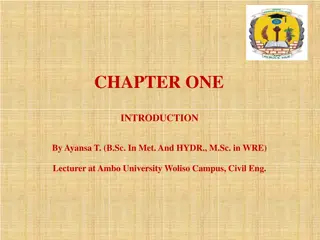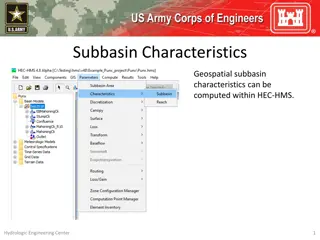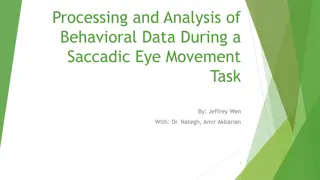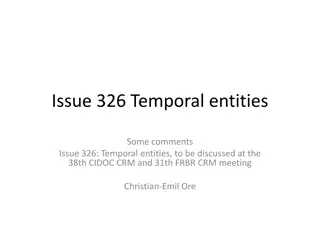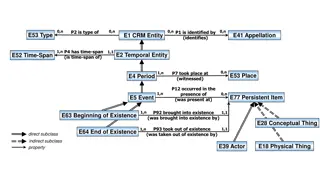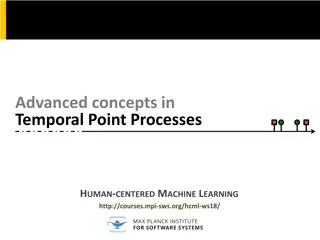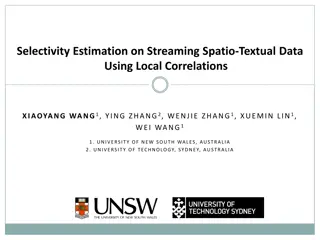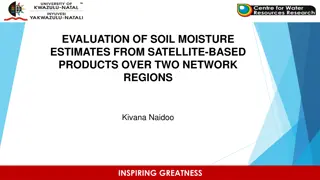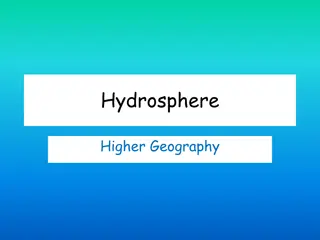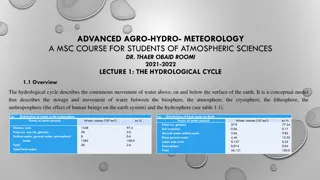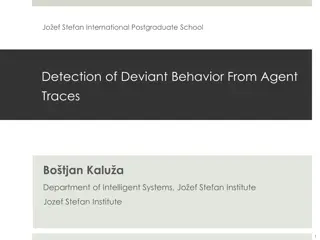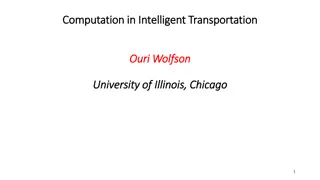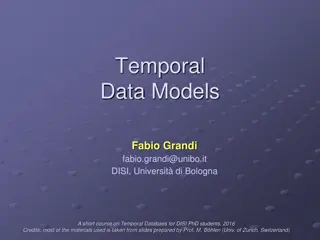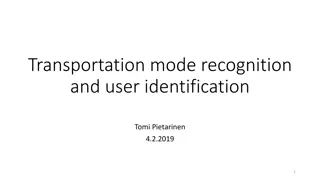Understanding Spatio-Temporal Dynamics of Hydrological Processes at IIT Roorkee
This study conducted at the Indian Institute of Technology Roorkee focuses on modeling and understanding hydrological processes, particularly in estimating antecedent moisture in the Runoff Curve Number methodology. The research delves into the historical background of the Soil Conservation Service Curve Number method, emphasizes the importance of antecedent soil moisture in rainfall-runoff modeling, and outlines the methodology employed, including equations and models. By exploring the interplay between watershed characteristics and land-atmosphere interactions, this experimental study sheds light on improving runoff predictions in hydrological applications.
Download Presentation

Please find below an Image/Link to download the presentation.
The content on the website is provided AS IS for your information and personal use only. It may not be sold, licensed, or shared on other websites without obtaining consent from the author. Download presentation by click this link. If you encounter any issues during the download, it is possible that the publisher has removed the file from their server.
E N D
Presentation Transcript
INDIAN INSTITUTE OF TECHNOLOGY ROORKEE HS2.2.1: Models and Data: Understanding and Representing Spatio-Temporal Dynamics of Hydrological Processes An Approach To Accommodate And Estimate Antecedent Moisture In Runoff Curve Number Methodology-An Experimental Study Surendra K. Mishra1, Ishan Sharma1Ashish Pandey1and Shailendra Kumre2 1Department of water Resources Development & Management Indian Institute of Technology Roorkee, India 2National Institute of Hydrology (NIH) Roorkee, India
OUTLINE Historical Background Introduction Methodology Study Area Results Discussions & Conclusions References 2
HISTORICAL BACKGROUND The Soil Conservation Service Curve Number method was originally developed by the SCS now renamed as Natural Resource Conservation Service (NRCS) under United States Department of Agriculture (USDA) (SCS, 1956; NRCS, 1997) to estimate the volume of direct surface runoff for given rainfall events. The SCS-CN technique is a conceptual model of hydrologic abstraction of storm rainfall, supported by empirical data dedicated to estimate direct runoff volume from storm rainfall depth based on a single numeric parameter CN. It accounts for the major runoff producing watershed characteristics, viz., soil type, land use/treatment, surface condition, and antecedent moisture conditions (AMCs). The SCS-CN method has been a topic of much discussion in hydrologic literature, especially in the last three decades because it is easy, simple and easy to understand especially for ungauged catchments. 3
INTRODUCTION IMPORTANCE OF ANTECEDENT SOIL MOISTURE (M) In rainfall runoff modeling, characterization of soil moisture variability is vital for the determination of the association between the hydrologic response of a watershed and the land atmosphere interaction. Western et al. (1998) demonstrated that surface runoff is controlled by soil moisture, with some of the threshold depending on the depth over which the soil moisture is average. Incorporating the physical soil moisture accounting (SMA) procedure can increase the model s runoff prediction capabilities. The CN model uses the previous five-day rainfall (P5) depth to differentiate the watershed initial losses. See table below (Source: SCS 1956) AMC Total 5-day antecedent rainfall (cm) Dormant Season Growing Season I Less than 1.3 Less than 3.6 II 1.3 to 2.8 3.6 to 5.3 III More than 2.8 More than 5..3 4
METHODOLOGY Existing SCS-CN Method Q =(P Ia)2 P Ia+S S = 254 CN 100 Here P is the total rainfall, Ia is the initial abstraction, Q is the direct runoff, S is the potential maximum retention, and is the initial abstraction coefficient. In the existing SCS-CN method, = 0.2 for practical applications. Hawkins (1993) suggested S-computation from the following equation: S = 5 P + 2Q Q 4Q + 5P . 1 100 .(2) .(3) Modified Mishra and Singh Model (2002) P Ia(P Ia+M) (P Ia+S+M) M =(P5 0.2SI)SI (P5+0.8SI) P5 is the antecedent 5-d rainfall amount and SI is the potential maximum retention corresponding to Antecedent Moisture Condition (AMC I). Q = . 4 . 5 5
METHODOLOGY CONTINUED From Fig. 1, using the volumetric concept we can draw an analogy that Sabs in magnitude equals the volume of voids (Vv), S equals volume of air and M equals volume of water. This analogy will help in developing a new model to include M and Sabs in SCS-CN methodology to eliminate quantum jumps for ungauged catchments and also to compute antecedent moisture content. S = 5 P + 2Q +M (2Q +M 2)2+Q(5P + M) 2 .(6) M can be substituted as Sabs - S into equation 6 to obtain N1: 7P Q+Sabs (5P+Q)2+Sabs(Sabs 10P+22Q) 2.4 S = .(N1) Fig. 1 Three-Phase system of soil mass showing S, Sabs, and M. 6
METHODOLOGY CONTINUED Remember equation N1 is derived for Ia = 0.2S, for Ia = S the same equation can be re-written as: 2P Q+Sabs+P (P +Q)2+Sabs(Sabs+2Q 2P 2( +1) +4Q ) S = (7) From Fig. 1, it can be further seen that Sabs in magnitude equals volume of voids (Vv) and it can be further related with soil porosity (n) as n =Vv where, V is total volume of soil profile respectively. Also, from Fig.1, volumetric moisture content can be expressed as M / V and replacing V by Sabs / n, w (in %) can be expressed as: w =100nM Sabs If Sabs is known, M can simply be computed as Sabs - S. Here, Sabs either can be taken as the maximum of all the S values computed from the Hawkins (1993) equation (Eq. 3) denoted as Smax or it can be optimized for a particular watershed using large rainfall-runoff datasets denoted as Sopt.. Henceforth, by measuring the moisture content and porosity at the site, the applicability of the modified Mishra- Singh model can be verified. V (N2) 7
STUDY AREA The rainfall-runoff data were derived from experimental farms situated at 29 50 09 N and 77 55 21 E in Roorkee city of Uttarakhand State (India). This study includes records of P, Q and ASM from 6 plots with different land-use viz. Maize, Finger Millet, and Fallow land, all having slope 8% and similar Hydrologic Soil group (HSG) i.e HSG-A (McCuen, 1982). The observations were recorded from April 2016 to November 2018. Hence, all other conditions remain same besides the land use. M was measured at site using Time domain Reflectometry(TDR) 300 manufactured by FieldScout with probe 20 cm. Average porosity was assumed as 0.45 which is in the range of silty sand (Geotechdata.info, 2013). Fig.3 Plot having 8% slope with Collecting Tank Fig.2 Location of the Experimental Farm (Lal et al. 2019) 8
RESULTS Comparison of Moisture Content (w) Antecedent Soil Moisture (M) Relationship In this study, wtheoretical is computed for optimized & Sabs values. The plots of wtheoretical and wobserved are shown in figures 4 to 6. The optimization is carried out minimizing RMSE. N(wobserved wtheoretical)2 N The optimized value of and Sabs for different cases and the comparison between RMSE in w computation using optimized and Sabs or using =0.2 and Smax is shown in Table 1. Table 1. Optimized value of and Sabs for different slopes S.No Land use (opt.) Sabs(opt.)( mm) i=1 RMSE = RMSE(%) RMSE(%) (after opt.) 1 Finger Millet 11.02 7.87 0.09 325.40 2 Maize 10.93 7.26 0.06 340.16 3 Fallow Land 11.11 8.41 0.08 378.48 9
RESULTS Fig.4 wobserved vs wtheoretical derived from P-Q data of plot having finger millet Fig.5 wobserved vs wtheoretical derived from P-Q data of plot having maize Fig.6 wobserved vs wtheoretical derived from P-Q data of plot having fallow land 10
DISCUSSION AND CONCLUSION M is an important source for the variability in CN, which is incorporated in the modified Mishra-Singh model (N1 & N2) that physically verifies the existence and influence of antecedent moisture in curve number hydrology. The theoretical water content shows a good correlation with the observed (or measured) moisture (or water) content at site having land use finger millet and maize. For fallow land, although the relationship is not strong enough, it has a potential to indicate the physical existence of the parameter (S) and, in turn, (Sabs). Also, the optimized value of has the least error in computing M than the = 0.2. The existence of the fair relationship can, for example, be attributed to the inadequacy of data, i.e. the rainfall-runoff record is of only 2 years and thus, the value of Sabs may not be representative of all seasons/climate. Hence, further research with adequate data and experimental work in more automated and controlled environment may be carried out to have a better correlation between the measured and theoretical water contents. Thus SCS-CN method can also be used to estimate M which has widens its application. 11
REFERENCES Ajmal, M., Waseem, M., Wi, S., & Kim, T. W. (2015). Evolution of a parsimonious rainfall runoff model using soil moisture proxies. Journal of hydrology, 530, 623-633. Geotechdata.info, Soil void ratio, http://geotechdata.info/parameter/soil-void-ratio.html (as of November 16, 2013). Hawkins, R. H. (1993). Asymptotic determination of runoff curve numbers from data. Journal of Irrigation and Drainage Engineering, 119(2), 334-345. Jain, M. K., Mishra, S. K., Suresh Babu, P., Venugopal, K., & Singh, V. P. (2006). Enhanced runoff curve number model incorporating storm duration and a nonlinear I a-S relation. Journal of Hydrologic Engineering, 11(6), 631-635. Lal, M., Mishra, S. K., & Kumar, M. (2019). Reverification of antecedent moisture condition dependent runoff curve number formulae using experimental data of Indian watersheds. Catena, 173, 48-58 Michel, C., Andr assian, V., & Perrin, C. (2005). Soil conservation service curve number method: How to mend a wrong soil moisture accounting procedure?. Water Resources Research, 41(2). Mishra, S. K., & Singh, V. P. (2002a). SCS-CN-based hydrologic simulation package (pp. 391-464). Water Resources Publications: Littleton, CO. Mishra, S. K., & Singh, V. P. (2013). Soil conservation service curve number (SCS-CN) methodology (Vol. 42). Springer Science & Business Media.Mishra, S. K., Jain, M. K., & Singh, V. P. (2004). Evaluation of the SCS-CN-based model incorporating antecedent moisture. Water resources management, 18(6), 567-589. NRCS, U. (2007). Chapter 10, part 630 hydrology. Estimation of direct runoff from storm rainfall. In National engineering handbook . (Eds V Mockus, AT Hjelmfelt, HF Moody) pp. 1 79. US Department of Agriculture, Natural Resources Conservation Service, Washington, DC. SCS. (1956). National engineering handbook, section 4: Hydrology. Washington, DC. 12
THANK YOU 13
